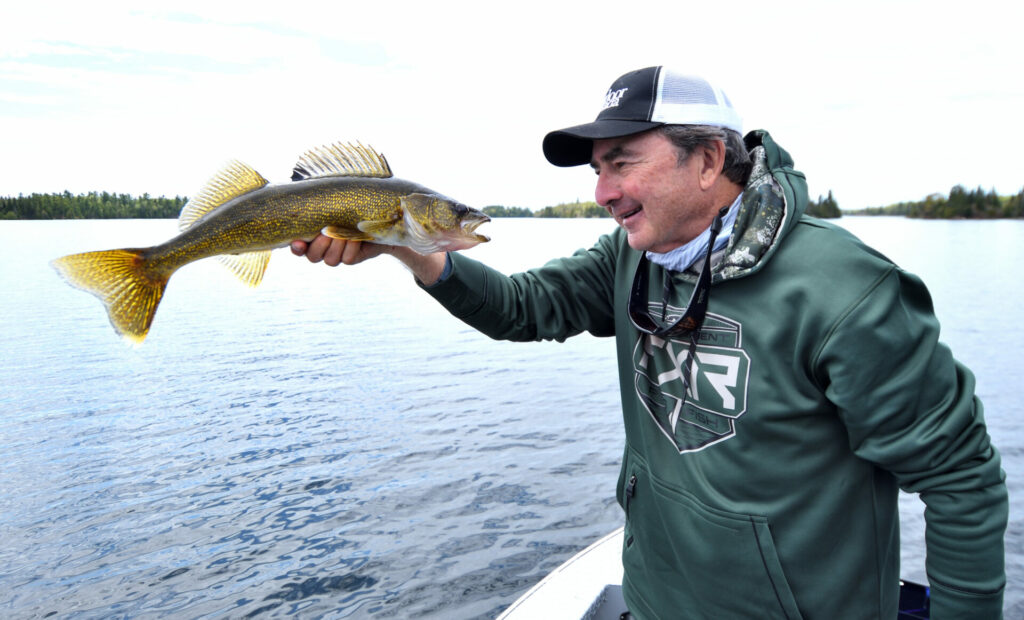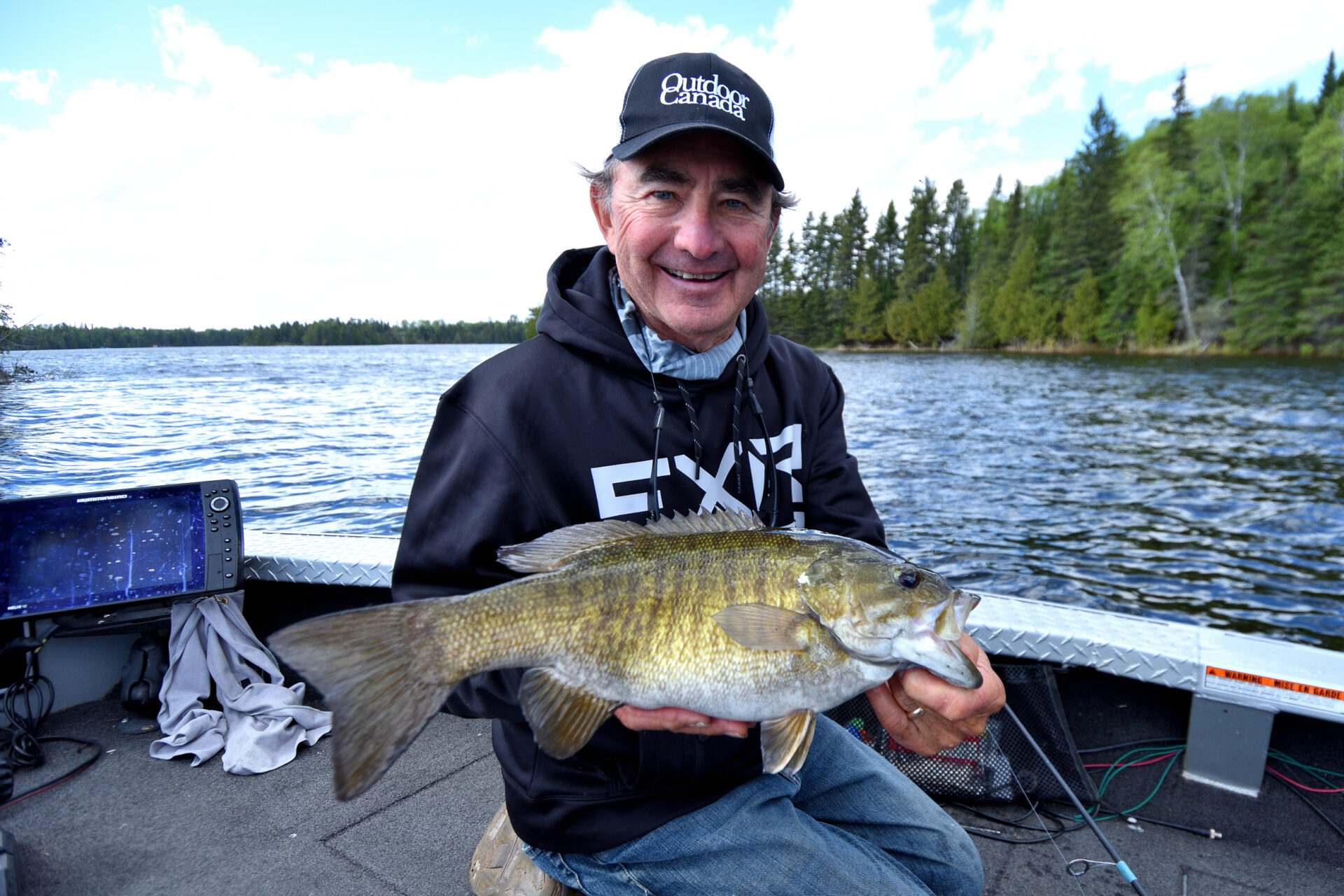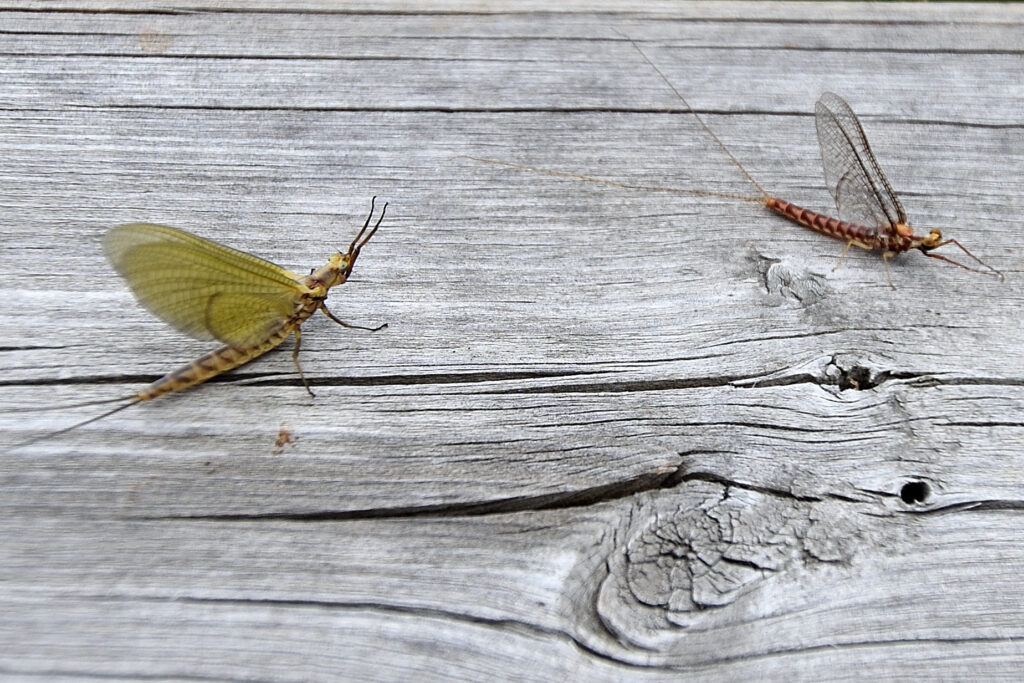Manic Mayfly Monday
Advertisement
Depending on where you live, the mayfly hatch is either just getting started, in full swing or beginning to ebb. And regardless of your favourite species—from brook, brown and lake trout to smallmouth bass, walleye and even northern pike—chances are excellent that the hatch is going to affect your fishing success.
Liam and I marked a nice school of walleye while we were muskie fishing the other day, so we took a break to rest our shoulders and dug out the finesse sticks to catch dinner. When I got home and started to clean our catch, as soon as I slid the knife behind the first fish’s gill plate, out oozed a thick black mud-like paste that covered the cleaning board. Every walleye stomach was packed with hundreds of partially digested mayfly larvae and pupae—the Hexagenia limbata mayfly to be precise.
Advertisement
These are the big beautiful mayflies with their huge para-sail-like wings that some folks call fish flies and others shad flies. They live as larvae and pupae for two years in the soft bottom of our lakes, finally hatching as the adults we see flittering across the surface of the lake. The life span of the adults is so short—only a couple of days—that they don’t even have mouths to feed. Their sole purpose is to mate, lay eggs and feed the ecosystem.
I’ve also mentioned before that the Hex hatch typically peaks in even-numbered years like this one. So much so that the insects act as a massive buffer crop—there can be as many as 120 nymphs crawling around in every square metre of lake bottom—that reduces cannibalism and predation on young-of-the-year walleyes. Think of it this way: Someone spilled bags and bags of pistachio, cashews and almonds on the kitchen table and it is your job to gobble them up.
Advertisement
With so much easy, delicious, protein-packed food emerging from the bed of the lake, however, you’ve got plenty of competition for your bait or lure. Fortunately, making the right lure choice and presentation is easy.
My favourite walleye presentation, for example, especially when I find a school of fish scattered across a mud flat is trolling a slow-death rig comprised of a bottom bouncer ahead of a curved hook that spirals like a hatching mayfly. In the early days we baited the hook with a piece of nightcrawler, but these days we tend to stick with a small piece of brown coloured soft plastic worm that stays on the hook much better and resists being broken and chewed up by a multitude of walleye, sauger and perch teeth.
Advertisement

A Southern Ontario buddy, Mark Alford, on the other hand, walloped the whitefish the other day, vertically jigging a small 1/4-ounce copper coloured spoon over mud flats in 45 to 60 feet of water. Mark said he cruised around the lake looking for mayfly cases littering the surface, and when he found them, his sonar screen clouded over like electrical interference. What he was looking at were thousands of mayfly pupae emerging from the soft bottom and rising up to the surface to hatch. The lucky ones emerged as adult mayflies. The less fortunate became whitefish dinners.
“I’d spot a cloud of mayflies suspended in the middle of the water column,” he said, “and below them I’d see 15 to 30 whitefish. I just dropped the spoon through the bug bloom and the whitefish would come up charging to eat it. I even had a big pike bite me off, so he was gorging on the mayflies as well. I could easily have caught and released 100 whitefish.”
I am seeing a few mayflies starting to hatch on the lakes I am fishing here in Northwestern Ontario, but because of the cooler water and delayed season this year, the peak is still at least a week or two away. When it happens, though, I’ll dig out my favourite brown and copper coloured MEPPS #3 and #4 Aglia spinners and head for the shallow sandy bays where I know there are weeds growing on the bottom with a few boulders interspersed among the vegetation. It’s usually as simple as casting out the in-line spinner, letting it sink to the bottom and then retrieving it in a simple do-nothing manner that resembles an emerging mayfly. But the real fun happens when you hear a splashy commotion, turn around and see a wolf pack of big bass corralling a column of flies hatching in the surface film. Pitch your Mepps into the mess and hang on. You’ll pinch yourself and say… “if this is a dream, please don’t let me wake up.”
See you out on the water.


